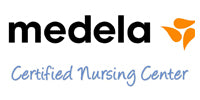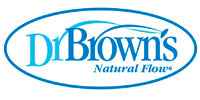BioCair ® BC-65 4 Pack Air Purifying Solution Bundle

4 Pack Anti-bacterial Air Purifying Solution Bundle
Saved S$14.40
S$31.8 Each Pack
New package version






Add On Refill Pack :
S$31.80 /pack
New Package Version
Add On Pocket Spray :
Anti-bacterial Disinfectant pocket spray S$15.80 / Bottle 
Add On Pocket Spray :
Anti-HFMD Pocket Spray S$16.80 / Bottle





HOW MANY GERMS ARE SPREAD WITH EACH COUGH OR SNEEZE?

Bad news for the germaphobes, a large amount of saliva that could contain millions of viruses is expelled with every cough or sneeze:
- Cough- coughing expels around 3,000 small droplets of saliva per cough that fly out of the mouth at speeds up to 30 kilometres per hour
- Sneeze- sneezing expels as many as 40,000 saliva droplets per sneeze at speeds estimated at 120 kilometres per hour
The saliva droplets can be large and wet or very small and almost dry. The wet droplets fall to the ground or onto a surface, the small droplets, many only the size of a human hair and barely visible, can remain airborne for hours.
Saliva droplets do not always contain viruses, but if a person is sick, the droplets expelled with just one cough could contain as many as 200,000,000 individual virus particles.
How long will the viruses contained in the saliva droplets survive? The airborne droplets will survive for hours, the large droplets that land steel or plastic can survive for days.
Fortunately our immune system will fight off the majority of the viruses we contact, including the viruses found in the airborne and surface saliva droplets. BioCair has created a range of non-toxic, high-level disinfectants that kill viruses found in the air and on surfaces, our disinfectants work with the body to improve overall health and immunity.
Reference drawn from Live Science: http://www.livescience.com/3686-gross-science-cough-sneeze.html
THE PROBLEM WITH ALCOHOL-BASED HAND SANITIZERS

Alcohol based hand sanitisers have been widely used, but are alcohol based hand sanitisers the best solution to fighting germs commonly found on hands?
Alcohol based sanitisers are toxic, flammable, can irritate skin and pose a risk when used around children. The effectiveness of alcohol based sanitisers is dependent upon alcohol content, quantity applied and allowing the sanitiser to fully dry.
About alcohol based sanitisers:
- High % Alcohol: To be effective, alcohol sanitisers should contain at least 60% alcohol (ethyl or isopropyl alcohol), the U.S. Food and Drug Administration and the Centers for Disease Control (CDC) recommend ethyl alcohol, isopropyl alcohol, or a mix of both in a concentration of 60% to 95%.
- Toxic: The high level of alcohol required results in the sanitiser being a toxic substance.
- Effectiveness: The CDC writes: "Although alcohol-based hand sanitizers can inactivate many types of microbes very effectively when used correctly, people may not use a large enough volume of the sanitizers or may wipe it off before it has dried”
- Irritation: Alcohol will sting cuts or broken skin and can irritate sensitive skin
- Flammable: All alcohol based products are potentially flammable and should be stored away from high temperatures and flames
- Skin irritation: Contact dermatitis- with symptoms including dryness, irritation, itching and cracking- has resulted following use of alcohol based hand sanitisers; in an attempt to combat dry and irritated skin, ‘softeners’ have been added.
Using alcohol hand sanitisers around children should be carefully considered, should children be handled by someone that has applied a toxic, flammable substance to their hands?
The Center for Disease Control (CDC) wrote this regarding the potential danger posed by alcohol based hand sanitisers: "Ethyl alcohol (ethanol)-based hand sanitisers are safe when used as directed, but they can cause alcohol poisoning if a person swallows more than a couple of mouthfuls. From 2011 – 2015, U.S. poison control centers received nearly 85,000 calls about hand sanitiser exposures among children. Children may be particularly likely to swallow hand sanitisers that are scented, brightly coloured, or attractively packaged.”
There are numerous non-toxic methods for sanitising the hands, objects and surfaces, all Biocair Products are non-alcohol, non-toxic, non-irritant to the eyes and skin, and tested to be safe for inhalation and ingestion.
References:
Center for Disease Control: http://www.cdc.gov/handwashing/show-me-the-science-hand-sanitizer.html
World Health Organization: http://www.who.int/gpsc/tools/faqs/abhr2/en/
Skin Reaction to Hand Hygiene: https://www.ncbi.nlm.nih.gov/books/NBK144008/
HAND FOOT AND MOUTH DISEASE (HFMD)
The Weekly Infectious Disease Bulletin issued by the The Ministry of Health Singapore has shown over 34,000 new cases of Hand Foot and Mouth Disease (HFMD) reported in Singapore during 2016. Singapore has been proactive in combatting HFMD, issuing guidelines to prevent the spread and screening students prior to entering schools. Yet, HFMD has continued to spread, what can be done to prevent HFMD?
Let’s review some facts about Hand Foot and Mouth Disease (HFMD):
- HFMD is a viral infection usually caused by the Coxsackievirus A16 virus, Enterovirus 71 has also been associated with HFMD.
- HFMD is spread from person-to-person by direct contact via nasal discharge, saliva, faeces and fluid from the rash of an infected person. The Center for Disease Control (CDC) lists airborne- through coughing or sneezing- as another form of transmission.
- Hand Foot and Mouth Disease is present in Singapore year round, both children and adults can be affected, but children below five years of age are particularly susceptible.
- New cases of HFMD have been legally notifiable since 2000.
Symptoms, Medication & Preventing the Spread of Hand Foot and Mouth Disease (HFMD):
HFMD symptoms include: fever, sore throat, ulcers in the throat, mouth and tongue, headache, rash with small blisters found on the hands, feet and diaper area and poor appetite. Symptoms vary between individuals.
A challenge in preventing the spread of HFMD: people can be contagious without showing any symptoms. The CDC states the following ‘generally, a person with hand, foot, and mouth disease is most contagious during the first week of illness. People can sometimes be contagious for days or weeks after symptoms go away.’
There is no medication to treat HFMD or vaccine to prevent HFMD; immunity is acquired after having the infection.
The Hand Foot and Mouth Disease (HFMD) Challenge & Prevention
The challenge HFMD presents to kindergarten and pre-schools: HFMD is spread through close contact- usually direct contact, occasionally via airborne- there is no vaccine or medicine to treat HFMD and many times symptoms are not present when someone is contagious.
The current methods suggested for prevention as suggested by the Singapore Health Promotion Board:
- Washing hands with soap and water before and after eating and after going to the toilet.
- Covering the mouth and nose with a piece of tissue when coughing or sneezing.
- Avoid sharing food/drinks, eating utensils, toothbrushes or towels with others.
- Ensuring that toys or appliances that are contaminated by nasal or oral secretions are disinfected before they are used again.
- Putting on a face mask when feeling unwell.
BioCair & Killing Hand Foot and Mouth Disease (HFMD)
The current prevention recommendations are sound recommendations that can easily be followed, yet these suggestions have been in place for years and HFMD continues to spread. We must evaluate new products and methods for combatting HFMD if we are to slow down the spread of HFMD.
The air and surfaces- we can wash our hands to reduce HFMD and other pathogens, but how to combat the bacteria and viruses found in the air and that land on surfaces?
BioCair offers new options to help slow HFMD- all BioCair products kill HFMD within 60-seconds of contact, with BioCair you can kill HFMD that could be found in the air, on surfaces and on your hands.
A unique aspect of BioCair: disinfecting the air with a non-hazardous BC-65 dry-mist, the mist is propelled into a room or area killing viruses and germs it comes in contact with- either in the air on on a surface- within 60-seconds. The dry-mist can be performed quickly and easily, with our without people in the room.
BioCair is a high-level, broad spectrum disinfectant, we have laboratory testing to show we kill 99.999% of viruses, bacteria, fungus and spores- all within 60-seconds of direct contact. With HFMD being a major concern in Singapore, we had third-party testing done to validate BC-65 can kill 99.999% of Coxsackievirus A16 & Enterovirus 71.
BC-65 is naturally derived, is non-toxic, non-irritant, contains no alcohol or triclosan and is eco-friendly.
In addition to combatting airborne pathogens, BioCair has a range of Pocket Sprays, including the Bioactive Spary that targets HFMD. The Pocket Spray can be applied directly to the hands, sprayed onto a toy, ball or teddy bear. Being non-toxic, non-irritant and containing no alcohol, all Biocair Pocket Spray are safe for use around children and a toy or your hands do not need to be wiped or cleaned after they have been sprayed with BioCair.
Using BioCair: Many users disinfect their children’s hands with the Pocket Spray when they come home from school and perform 1-2 hours of the dry-mist in the children's room on a daily basis.
BioCair, like any product, cannot eliminate HFMD, but we can safely and effectively provide protection against HFMD and other pathogens found in the air and on surfaces.
References:
MOH Singapore information pages on HFMD:
https://www.moh.gov.sg/content/moh_web/home/diseases_and_conditions/h/hfmd.html
MOH Singapore Update on HFMD Situation in Singapore, updated weekly with information on Childcare Centres and Kindergartens with active HFMD clusters and transmission:
https://www.moh.gov.sg/content/moh_web/home/diseases_and_conditions/h/hand_foot_mouth_disease.html
Image extracted from:
http://www.straitstimes.com/singapore/hfmd-cases-surge-to-near-record-high
DINING OUT: COMMON GERMS FOUND ON CUTLERY AND PLATES

We all enjoy a good meal at the local hawker center or restaurant, but what is the risk from bacteria or virus that could be lurking on a spoon, fork or plate?
There is good news, and some bad news:
- The bad news: bacteria and viruses are commonly found on cutlery, glasses and plates, even after they have been cleaned
- The good news: our immune system is well equipped to protect us, and we can help reduce the risk of bacteria and viruses
A study conduced by The Ohio State University1 found the following bacteria and viruses present on cutlery and dishes after cleaning via hand-washing or washing in a commercial dishwashing machine:
- Murine Norovirus (MNV-1)- causes nausea, vomiting and severe diarrhoea, responsible for 90% of epidemic non-bacterial cases of gastoeneririts, highly contagious
- Esherichia Coli (E. coli)- bacteria that is commonly causes ‘food poisoning’, diarrhoea is the most common result
- Listeria innocua (L. innocua)- not a common bacteria, causes flu-like symptoms or gastroenteritis and potentially causes serious illness.
The study found dishes that are hand-washed are more likely to contain bacteria and viruses than dishes cleaned in a commercial dishwasher.
To reduce the risk posed by these germs:
- Cleaning: Bacteria and viruses thrive on surfaces that aren’t properly cleaned, ensure your tabletop, cutlery and plates are not showing any dirt
- Disinfecting: Clean and disinfect your cutlery, plates and table with a non-toxic, high-level disinfectant, like BioCair Disinfectant Pocket Spray. Remember, what appears to be clean can contain thousands of bacteria and viruses.
- Hand Hygiene: Disinfect your hands prior to eating to avoid transferring any germs from your hands to a plate or cutlery. It’s a good idea to disinfect your hands again after eating.
1Details of the study can be found here: Ohio State University study: https://cph.osu.edu/node/869











